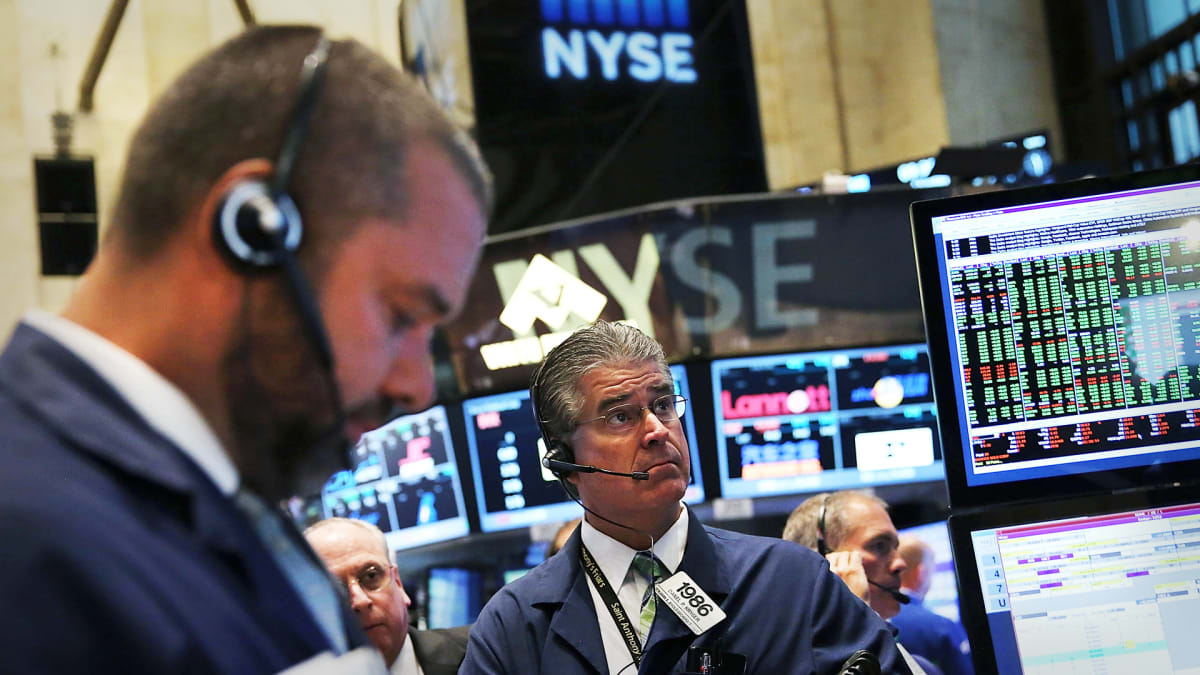
Five things you need to know before the market opens on Friday May 26:
1. -- Stock Futures Edge Lower As Traders Eye Debt Deal Reports
Wall Street futures slipped lower Friday, while the dollar gave back gains against its global peers and Treasury bond yields nudged higher, as investors looked to a key inflation reading prior to the opening bell while tracking reports of a potential agreement on raising the debt ceiling.
Bond yields have been marching higher for much of the week, with 2-year Treasury note yields touching at a two-and-a-half year peak of 4.522% in overnight trading, as investors price in a final Federal Reserve rate hike while looking to a conclusion on debt ceiling talks in Washington.
Reports suggest that President Joe Biden and House Speaker Kevin McCarthy are close to agreeing a deal that would raise the $31.4 trillion debt ceiling for two years, while freezing most government spending at 2023 levels.
A rush of funding from the Treasury to rebuild its depleted reserves -- estimated at around $500 billion -- which would likely follow a debt ceiling deal is expected to add further upward pressure to Treasury yields and potentially 'crowd out' demand for riskier assets as the new paper is taken down by domestic and international investors.
Stronger-than-expected job market data, a firmer reading of first quarter GDP growth and positive signals from the housing market all point to solid near-term growth prospects, as well, even as the broader Treasury complex continues to price in the chances of a near-term recession, with 10-year note yields trading at 3.796%, some 76 basis points south of 2-year paper.
The could put today's PCE Price Index data in sharp focus, as investors gauge the level of inflation pressures that linger in the domestic economy and assess their impact on the Fed's next policy decision.
The CME Group's FedWatch is currently pricing in a 43.5% chance of a 25 basis point rate hike in June, up from just 17.4% a week ago, with bets on a move higher in July pegged at around 66.4% should the Fed decide to pause.
The U.S. dollar index, which tracks the greenback against a basket of six global currencies, was marked 0.15% lower in overnight trading at 104.098 ahead of the PCE inflation data at 8:30 am eastern time.
Heading into the start of the trading day on Wall Street, futures tied to the S&P 500 were indicating a 7 point opening bell decline while those linked to the Dow Jones Industrial Average were priced for a 57 point move to the downside. The tech-focused Nasdaq was looking at a 1 point bump.
European stocks edged higher, with the region-wide Stoxx 600 rising 0.3% in early Frankfurt trading while Britain's FTSE 100 slipped 0.09% as the pound rose to 1.2353 against the U.S. dollar.
Overnight in Asia, the region-wide MSCI ex-Japan index was marked 0.66% higher into the close of trading while chip stocks helped Japan's Nikkei 225 to a 0.37% gain to close at a fresh 1990 high 30,8916.31 points following a softer-than-expected May inflation reading.
2. -- Fed Inflation Gauge In Focus As Rate Hike Bets Quicken
The Federal Reserve's preferred inflation gauge, the PCE Price Index, is expected to ease only modestly in April, underscoring the central bank's concern that consumer price pressures will remain elevated even as the economic growth slows into the summer months.
The Bureau of Economic Analysis will publish both headline and core readings of the PCE index, with the form likely to slow to an annualized rate of 3.9% from the 4.2% recorded in March.
The closely-tracked core reading, which strips out volatile components such as food and energy, is expected to hold at 4.6%, with prices rising 0.3% on the month, according to the Street consensus forecast.
The Commerce Department's headline consumer price index, published earlier this month, showed inflation easing to 4.9%, the lowest in 2 years, but rising 0.4% on the month thanks in part to a 3% surge in national gasoline prices.
3. -- Costco Lower After Q3 Earnings Miss on Muted Big Ticket Spending
Costco Wholesale (COST) shares edged lower in pre-market trading as spending on big-ticket items slowed in the face of elevated inflation and an uncertain job market.
Costco said diluted earnings for the three months ending on May 7 fell 7.6% from last year to $2.93 per share, with revenues rising 1.9% to $52.6 billion and membership fees up 6.1% to $1.04 billion. Overall sales of $53.65 billion were shy of analysts' forecasts of a $54.57 billion tally.
Average daily transaction were down 3.5% in the U.S., and 4.2% worldwide over the quarter, Costco said, thanks in part to weakness in sales in bigger-ticker, non-discretionary food items.
"This is the second quarter that we've seen that discussion of lower sales of big-ticket discretionary items," CFO Richard Galanti told investors on a conference call late Thursday. "So, all things being equal, we'll be comparing against easier compares six months from now."
Costco shares were marked 0.3% lower in pre-market trading to indicate an opening bell price of $485.00 each.
4. -- U.S. Banks Cut Fed Borrowing, Balance Sheet Shrinks
U.S. banks slashed their borrowing from the Federal Reserve's various lending programs this week, suggesting stresses from the failures of Silicon Valley Bank and the sale of First Republic are beginning to unwind for regional lenders
Banks borrowed just $4.2 billion from the Fed's main discount window over the seven-day period ending on May 17, according to Fed data, down from the $9 billion handed-out over the prior period and the lowest since early March.
The Fed's "other credit" account, which has been used to allocate borrowing from First Republic Bank, which was sold to JPMorgan Chase (JPM) last month, and well as the cost of winding down other failed lenders, fell $15.9 billion to $192.6 billion.
Borrowing from the Fed's new Bank Term Funding Program, which allows banks to exchange high-quality assets for one-year loans, was up $3.9 billion to $87 billion. The Fed's overall balance sheet, meanwhile, shrunk by around $21 billion to $8.486 trillion.
5. -- Debt Ceiling Deal Nears As Biden, McCarthy Focus On Spending Freeze
President Joe Biden and House Speaker Kevin McCarthy are on the verge of agreeing to a two-year deal that would raise the $31.4 trillion debt ceiling just days before the Treasury will be unable to spend cash to cover debt payments and government expenses.
Multiple media reports suggest Biden and McCarthy are close to agreeing terms that would effectively freeze most currenting government spending at 2023 levels, although spending on military and veterans programs would be modestly increased.
If agreed, the deal would have to find its way through a Republican-controlled Congress, which has broken for the Memorial Day weekend and won't return to Washington until late next week. The Senate, meanwhile, is not in session at all, and the Treasury has said it will run out of money on the so-called June 1 'x-date'.
"We knew this would not be easy," McCarthy told reporters in Washington. "I don't think everybody's going to be happy at the end of the day. That's not how the system works."
Earlier this week, Fitch Ratings placed the U.S.'s triple-A rating on 'negative watch', indicating the potential for a downgrade if Congress is unable to authorize the Treasury to continue spending -- and servicing debt payments -- after the so-called x-date.







